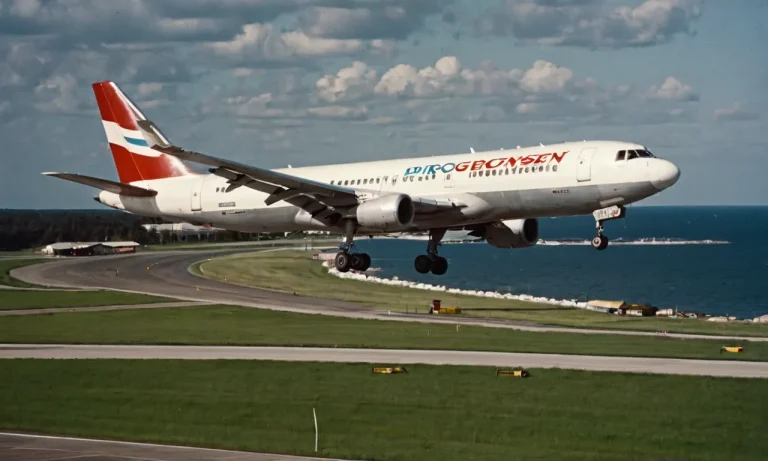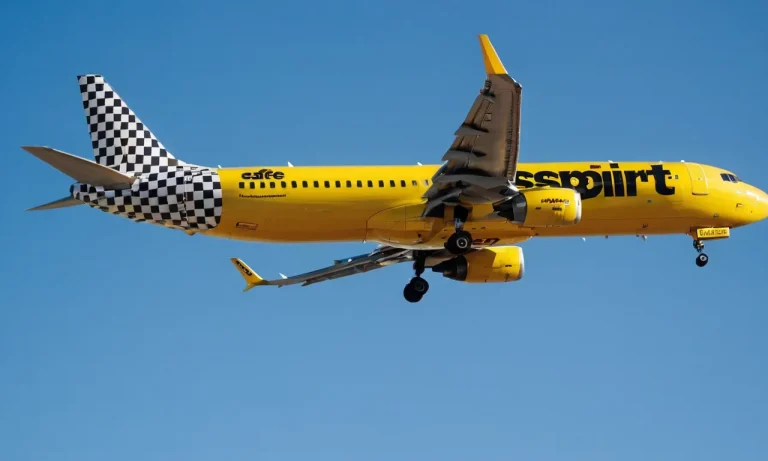Why Is Cruising So Expensive?
Cruising offers a unique vacation experience, allowing travelers to explore multiple destinations while only having to unpack once. However, cruise fares often come with shocking price tags, leaving many would-be cruisers wondering, “Why is a cruise so expensive?” If you’re short on time, here’s a quick answer to your question: Cruises come with more costs bundled together than a regular land vacation, including food, activities, entertainment, transportation, lodging, as well as operating a massive ship staffed with thousands of crew members.
In this comprehensive guide, we’ll break down the many factors that contribute to the high costs associated with taking a cruise.
Upfront Cruise Costs
When it comes to booking a cruise, one of the first things that can catch people off guard is the upfront cost. Cruising, while an amazing and enjoyable experience, can be expensive due to various factors. Let’s take a closer look at some of the upfront costs associated with cruising.
Cruise Fare
The cruise fare is the base price you pay for your cabin or stateroom. This cost can vary depending on the cruise line, the ship, the itinerary, and the time of year. Cruise fares typically include your accommodations, meals, and onboard entertainment.
The price can range from a few hundred dollars for shorter cruises to several thousand dollars for luxury or longer voyages.
Taxes and Port Fees
In addition to the cruise fare, you will also need to factor in taxes and port fees. These fees are imposed by the government and are used to support the infrastructure and services of the ports you will be visiting. They can vary depending on the destination and the length of the cruise.
It is important to note that these fees are non-negotiable and are often added to the total cost of your cruise.
Gratuities
Another upfront cost to consider is gratuities. Most cruise lines have a gratuity or service charge policy where a specific amount per person per day is automatically added to your onboard account. This amount is then distributed among the staff members who provide you with exceptional service during your cruise, such as your cabin steward, dining room servers, and housekeeping staff.
While gratuities are technically optional, it is customary to pay them as they are an important part of the cruise industry’s compensation structure.
It’s worth noting that while these upfront costs may seem high, cruising offers a great value for the money spent. In addition to your accommodations, meals, and entertainment, you also have access to a wide range of amenities and activities on board.
Plus, the opportunity to visit multiple destinations in one trip can be a cost-effective way to explore different places without the hassle of multiple flights and accommodations.
For more information on cruise costs and how to budget for your next cruise, check out Cruise Critic, a leading website for cruise reviews and information.
Onboard Spending
One of the reasons why cruising can be expensive is the additional costs associated with onboard spending. While the initial cost of a cruise may seem reasonable, it is important to factor in the various expenses that can quickly add up during your time at sea.
These expenses can include specialty dining and drinks, shore excursions, spa treatments and salon services, casino gambling, photos, retail shopping, and internet access.
Specialty Dining and Drinks
Many cruise lines offer a variety of specialty dining options, ranging from gourmet restaurants to themed eateries. While the main dining options are typically included in the cost of your cruise, these specialty dining experiences often come with an additional fee.
Similarly, while non-alcoholic beverages such as water, coffee, and tea are usually included, alcoholic beverages and specialty drinks can be an extra expense.
Shore Excursions
Exploring the ports of call is one of the highlights of a cruise vacation, but participating in shore excursions can significantly increase your overall spending. Whether you choose to go snorkeling, take a city tour, or go zip-lining, these activities often come at a price.
It is important to consider your budget when selecting which shore excursions to participate in.
Spa Treatments and Salon Services
For those looking to relax and indulge in some pampering, onboard spas and salons offer a range of treatments and services. From massages and facials to haircuts and manicures, these services can be a luxurious addition to your cruise experience.
However, they also come with an additional cost that should be factored into your overall budget.
Casino Gambling
If you enjoy trying your luck at the casino, be prepared to spend some extra money. Cruise ships often have onboard casinos where you can play a variety of games, including slot machines, poker, and blackjack.
While gambling can be a fun and thrilling activity, it is important to set a budget and stick to it to avoid overspending.
Photos
Cruise ships have professional photographers who capture special moments during your vacation. Whether it’s a formal dinner or a scenic backdrop, these photographers are there to help you capture memories that will last a lifetime.
However, purchasing these photos can add up quickly, so it’s important to consider your budget when deciding which ones to buy.
Retail Shopping
From duty-free shops to onboard boutiques, cruise ships offer a wide range of retail shopping options. Whether you’re looking for designer clothing, jewelry, or souvenirs, there is something for everyone.
However, keep in mind that these items often come with a higher price tag than what you would find on land.
Internet Access
Staying connected while at sea is important for many travelers, but accessing the internet onboard a cruise ship can be quite costly. Most cruise lines offer internet packages that allow you to stay connected, but these packages can add up quickly.
It’s important to consider whether staying connected is a necessity or if you can disconnect and enjoy a truly relaxing vacation.
Operating Expenses
When it comes to understanding why cruising can be expensive, one of the main factors to consider is the significant operating expenses that cruise lines incur. These expenses include everything from food and fuel to insurance and staffing costs.
Let’s take a closer look at some of the key operating expenses that contribute to the overall cost of cruising.
Food
Feeding thousands of passengers and crew members on a cruise ship is no small feat. Cruise lines strive to provide a wide variety of high-quality dining options to cater to different tastes and dietary preferences.
This means sourcing fresh ingredients, maintaining well-equipped kitchens, and employing skilled chefs and culinary staff. All of these factors contribute to the higher food costs associated with cruising.
Fuel
Operating a massive cruise ship requires a significant amount of fuel. These ships are like floating cities, and they need fuel to power the engines, generators, and other onboard systems. Fuel prices can fluctuate, impacting the overall operating expenses for cruise lines.
Additionally, as the industry moves towards more sustainable practices, cruise lines are investing in cleaner and more efficient fuel alternatives, which can also increase costs.
Insurance
Insurance is a crucial aspect of operating a cruise ship. Cruise lines need various types of insurance coverage to protect against potential risks and liabilities, including passenger accidents, medical emergencies, and damage to the ship itself.
These insurance premiums can be substantial, especially considering the size and value of modern cruise ships. Meeting these insurance requirements adds to the overall cost of cruising.
Staff and Crew
A cruise ship is staffed by a dedicated team of professionals who ensure that passengers have a memorable experience. From cabin stewards and waitstaff to entertainment personnel and onboard medical staff, the cruise industry relies on a diverse workforce.
Cruise lines invest heavily in recruiting, training, and retaining skilled staff and crew members. Salaries, benefits, and accommodation expenses for these employees contribute significantly to the operating costs of cruising.
Itinerary
One of the main factors that contribute to the expense of cruising is the itinerary. The destinations included in a cruise can greatly impact the overall cost. Some destinations are more popular and in higher demand, leading to higher prices.
For example, cruises to exotic locations like the Maldives or Antarctica tend to be more expensive due to their remote locations and limited availability. On the other hand, cruises to more common destinations like the Caribbean or Mediterranean may be more affordable.
Destinations
The specific ports of call and the number of destinations visited during a cruise can also affect the cost. Itineraries that include multiple popular tourist destinations can be more expensive as they offer a wider range of activities and attractions.
Additionally, cruises that feature exclusive or private island experiences may come at a higher price point.
Furthermore, the length of time spent in each destination can also impact the cost. Longer stays in ports may allow for more immersive experiences and exploration but can also increase the overall price of the cruise.
Conversely, shorter stays may limit the amount of time passengers have to explore the destinations, but can be more budget-friendly.
Duration
The duration of the cruise itself is another key factor in determining the cost. Longer cruises with extended itineraries are generally more expensive than shorter cruises. This is because longer cruises often include more amenities, activities, and entertainment options to keep passengers engaged throughout the trip.
Additionally, longer cruises may require more resources and fuel, leading to higher operating costs for the cruise line.
Ship Size and Age
The size and age of the cruise ship can also influence the cost of a cruise. Larger, more modern ships with state-of-the-art amenities and luxurious accommodations tend to come with a higher price tag.
These ships often offer a wider range of onboard activities, entertainment options, and dining choices, which can increase the overall value of the cruise experience.
Conversely, smaller or older ships may be more affordable but may offer fewer amenities and have a more limited range of activities. However, some passengers prefer the intimacy and charm of smaller ships, which can provide a more personalized and intimate cruising experience.
It is also worth noting that newer ships often incorporate the latest technological advancements, such as energy-efficient systems, reducing their environmental impact. This can contribute to higher operating costs, which are reflected in the price of the cruise.
Ultimately, the itinerary of a cruise, including the destinations, duration, and ship size and age, all play a significant role in determining the cost. Passengers should consider their preferences and budget when choosing a cruise to ensure it aligns with their expectations and desires.
Conclusion
While sticker shock is common when first looking at cruise fares, the all-inclusive nature of a cruise vacation accounts for much of the upfront cost. Operating these massive, floating cities requires tremendous overhead expenses as well.
However, once on board, cruisers have full control over how much they choose to spend. Following tips to cruise on a budget goes a long way.
At the end of the day, cruising offers immense value, allowing you to wake up in a new destination every day without having to worry about planning transportation, lodging, or meals. The convenience of cruising leads many travelers to return again and again, despite the expensive initial fare.








